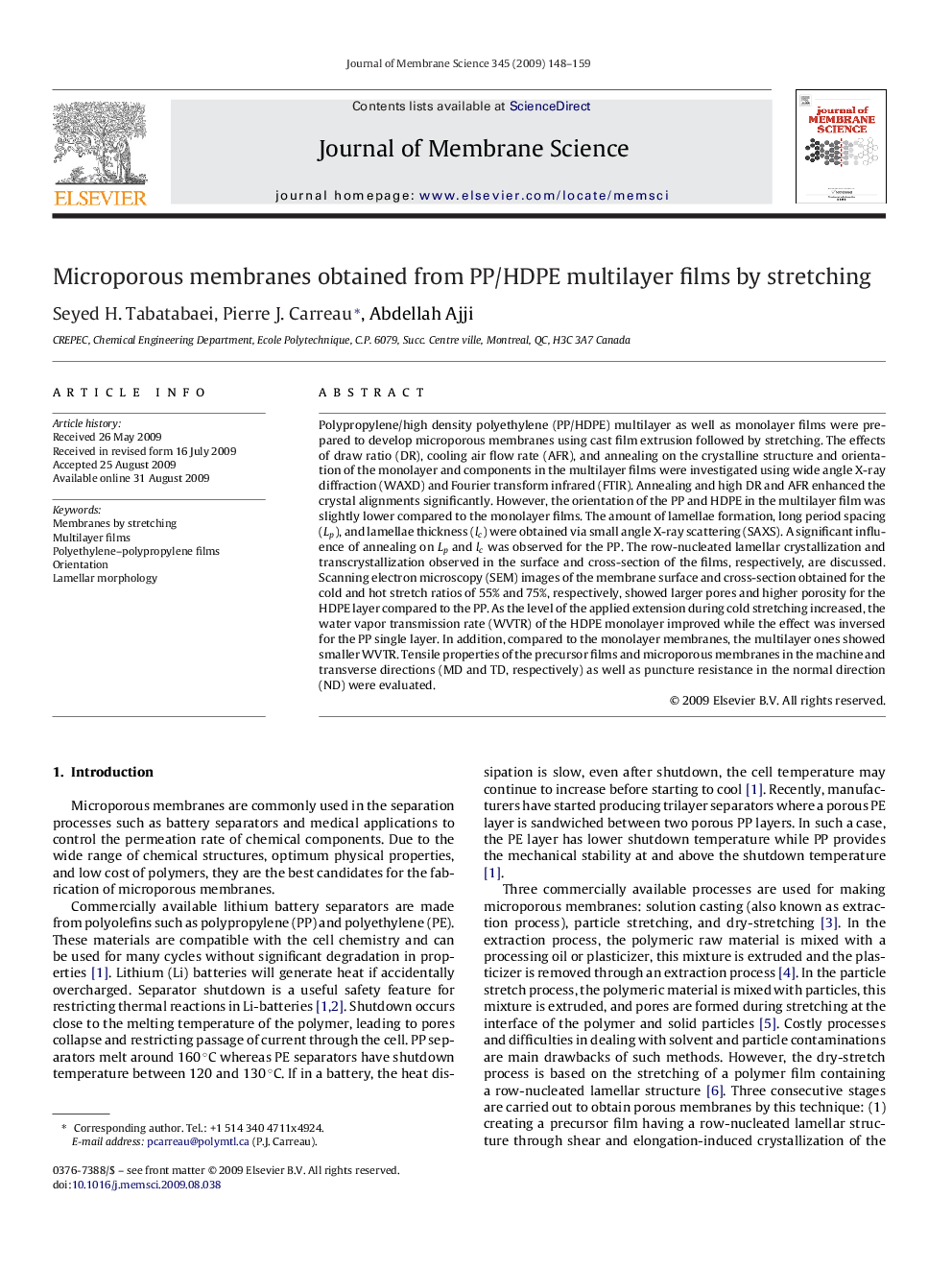| Article ID | Journal | Published Year | Pages | File Type |
|---|---|---|---|---|
| 636926 | Journal of Membrane Science | 2009 | 12 Pages |
Abstract
Polypropylene/high density polyethylene (PP/HDPE) multilayer as well as monolayer films were prepared to develop microporous membranes using cast film extrusion followed by stretching. The effects of draw ratio (DR), cooling air flow rate (AFR), and annealing on the crystalline structure and orientation of the monolayer and components in the multilayer films were investigated using wide angle X-ray diffraction (WAXD) and Fourier transform infrared (FTIR). Annealing and high DR and AFR enhanced the crystal alignments significantly. However, the orientation of the PP and HDPE in the multilayer film was slightly lower compared to the monolayer films. The amount of lamellae formation, long period spacing (Lp), and lamellae thickness (lc) were obtained via small angle X-ray scattering (SAXS). A significant influence of annealing on Lp and lc was observed for the PP. The row-nucleated lamellar crystallization and transcrystallization observed in the surface and cross-section of the films, respectively, are discussed. Scanning electron microscopy (SEM) images of the membrane surface and cross-section obtained for the cold and hot stretch ratios of 55% and 75%, respectively, showed larger pores and higher porosity for the HDPE layer compared to the PP. As the level of the applied extension during cold stretching increased, the water vapor transmission rate (WVTR) of the HDPE monolayer improved while the effect was inversed for the PP single layer. In addition, compared to the monolayer membranes, the multilayer ones showed smaller WVTR. Tensile properties of the precursor films and microporous membranes in the machine and transverse directions (MD and TD, respectively) as well as puncture resistance in the normal direction (ND) were evaluated.
Related Topics
Physical Sciences and Engineering
Chemical Engineering
Filtration and Separation
Authors
Seyed H. Tabatabaei, Pierre J. Carreau, Abdellah Ajji,
